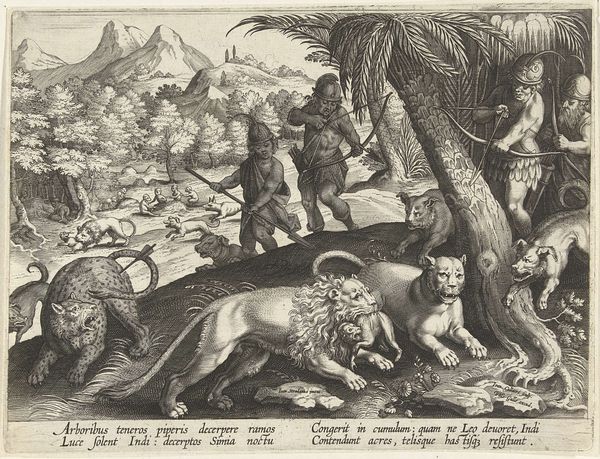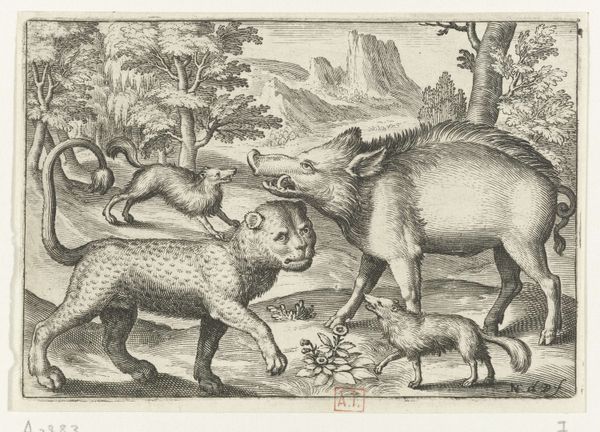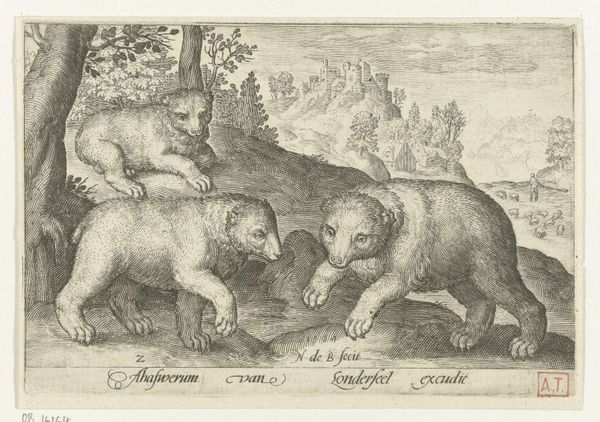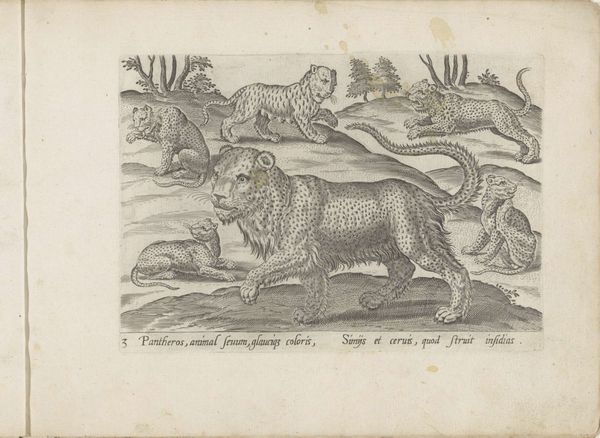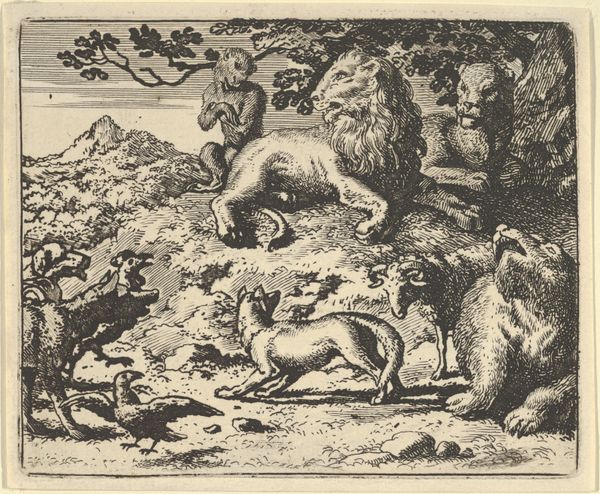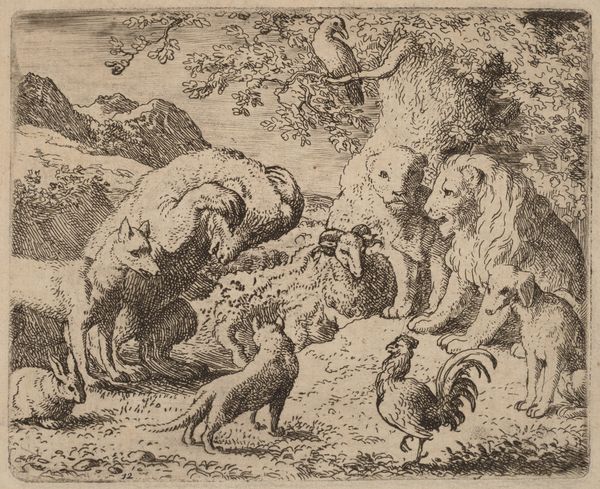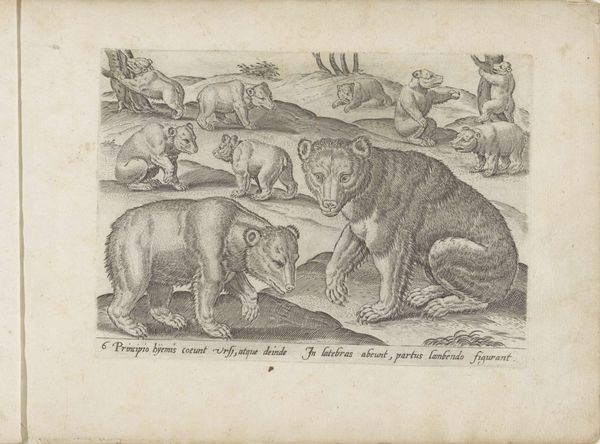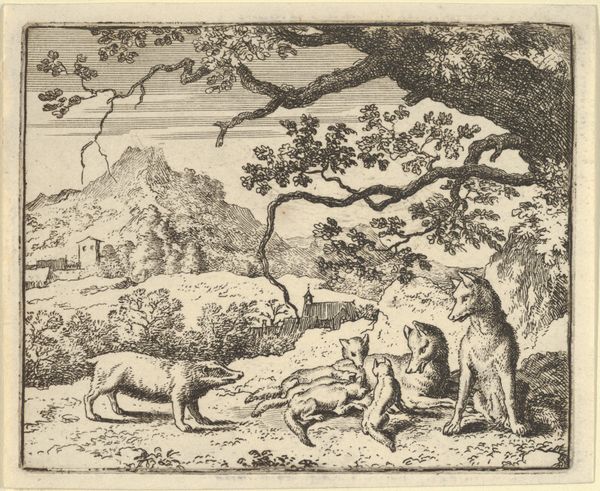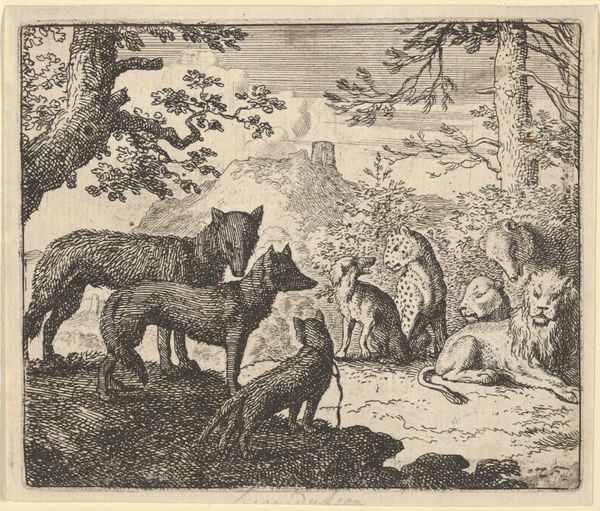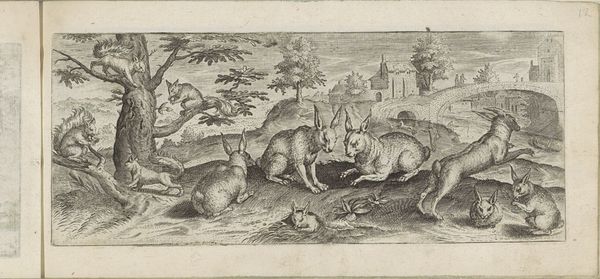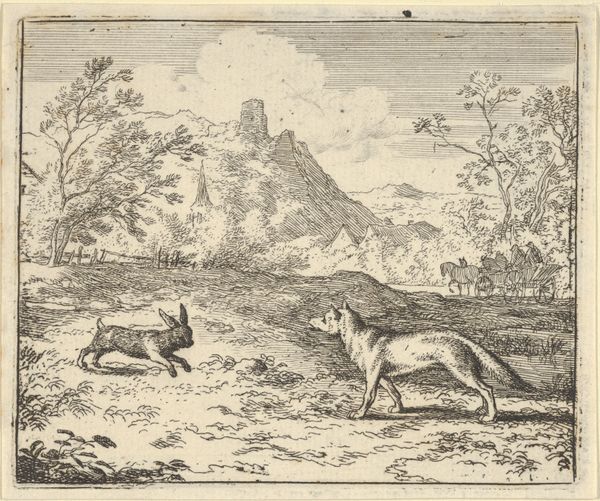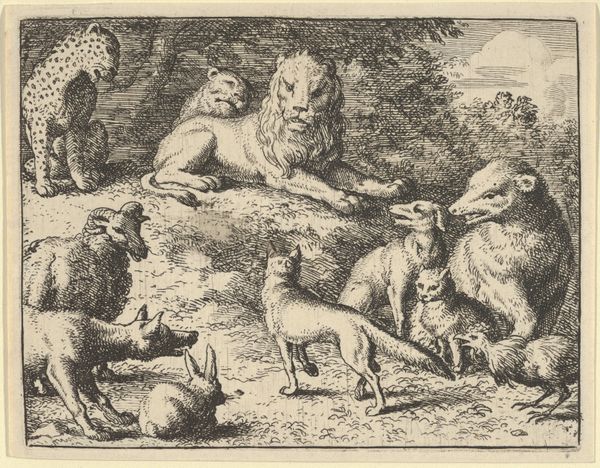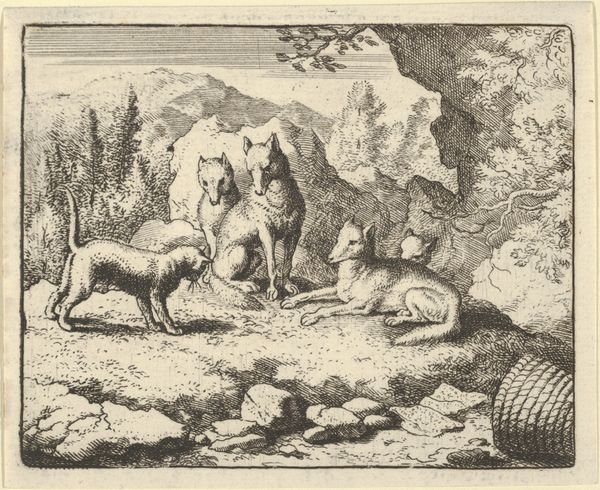
engraving
#
animal
#
old engraving style
#
landscape
#
genre-painting
#
northern-renaissance
#
engraving
Dimensions: height 88 mm, width 129 mm
Copyright: Rijks Museum: Open Domain
In 1594, Nicolaes de Bruyn created this print of a wild boar, foxes, beaver, porcupine and frogs, using the technique of etching. Etching involves coating a metal plate with a waxy, acid-resistant substance, then scratching an image into the wax. The plate is then dipped in acid, which bites away at the exposed metal, leaving behind an incised design. This intaglio method allowed de Bruyn to create intricate lines and tonal variations, bringing depth and texture to the depicted animals. The choice of etching as a medium also speaks to the broader social context of the time. During the late 16th century, printmaking was becoming increasingly popular as a means of disseminating images and ideas. Etchings, in particular, were favored for their relative ease of production, compared to other printmaking techniques like engraving. The amount of work involved is impressive, as is the fine detail de Bruyn was able to achieve with this relatively new technology. This print invites us to consider how artistic practices intersect with broader social and economic forces, challenging traditional distinctions between art and craft.
Comments
No comments
Be the first to comment and join the conversation on the ultimate creative platform.
